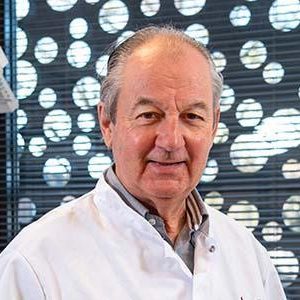Mayo Podcast interview: Gorgels indicates he thinks CineECG is the next step into the development of electrocardiography.
In the recent weeks an ECG centered Mayo Clinic podcasts focused on CineECG. Both our co-founder and scientific director Dr. Peter van Dam and the distinguished cardiologist prof. Ton Gorgels were interviewed by dr Anthony Kashou MD of the Mayo Clinic’s ECG segment Making Waves series.
In these podcast the latest innovations regarding ECG recording, ECG interpretation and ECG education are discussed with the experts in the domain. Last year Peter van Dam was already interviewed and had the opportunity to introduce the CineECG methodology for ECG interpretation. This time two interviews were held.

The discussion with Ton Gorgels focused on the challenges in Acute Coronary Syndrome (ACS) detection which emergency physicians are facing every day.
Ton Gorgels is a global expert in ECG interpretation and used to educate cardiologists all over the world together with the late (and missed) professor Hein Wellens.
For the past year Prof. Gorgels is now working with CineECG and his findings are remarkable. In the interview Gorgels indicates he thinks CineECG is the next step into the development of electrocardiography. And Gorgels mentions a number of examples of the added value of CineECG he has learned over the past year. …” So we found that the CineECG was very accurate actually in determining the side of the ischemic area”… And furthermore, …” the most intriguing finding actually was what we found in circumflex occlusions because we had examples where actually no or not much changes in the ST segments were seen in the surface electrocardiogram but where the CineECG, to our surprise, shows very clearly the direction, the change in the ST direction into the posterior basal area pointing to indeed an occlusion in the circumflex. That was a surprising finding, and it suggests that the CineECG could have more information than just a 12-lead electrocardiogram”…
If you want to listen to the podcast here’s the link and if you just want to read the transcript here’s another link.
The second interview with Peter van Dam had a focus on the way CineECG has been developed and has taken vectorcardiography and inverse cardiac modelling to the next level.

CineECG actually applies a digital twin approach in reconstructing the mean electrical pathway through the heart and actually showing this to the physician. This way the mental exercise which has to performed by a physician when they have to mentally convert the 2 dimensional graphs of the 12 lead ECG to what is happening inside the 3 dimensional heart is far mor easier. And the other thing is that CineECG shows that a normal heart performance results In a standard pathway which makes it far easier to distinct between normal and abnormal electrical heart performance. Finally Peter and Anthony discussed the difference and the synergies between using CineECG and AI type of solutions. If you want to listen to the podcast here’s the link and if you just want to read the transcript here’s another link.
So of course we recommend to listen to the Mayo Clinic podcasts focused on CineECG and we want to thank the team of Mayo Clinic for inviting both Peter and Ton Gorgels to his highly informative series.
The post CineECG is the next step appeared first on ECG-Excellence.